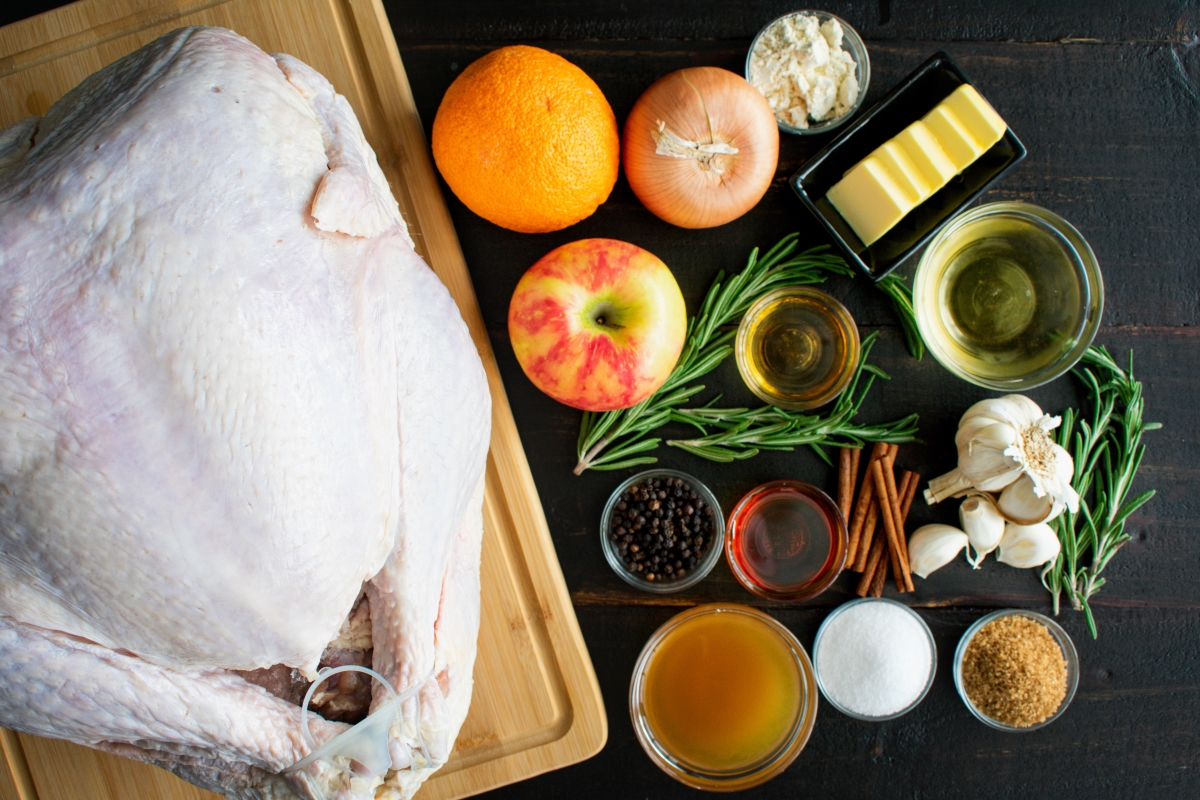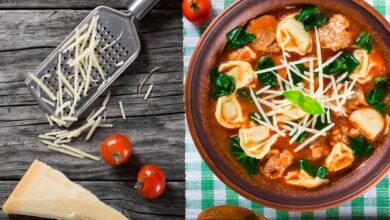
If you are like most turkey cooking enthusiasts, you have dreamed of making the tastiest, most succulent bird for the holidays.
And in your quest for the best technique for making the perfect turkey, you’ve probably come across the subject of dry brining and wondered exactly what it is, as well as how to do it to help your turkey turn out its best.
Read More »Why Brine Your Meat?
When you season your meat just minutes before cooking it, it doesn’t allow the seasonings time to penetrate the meat, which results in a less flavorful turkey. However, when you brine your meat, it marinates in the seasonings, which gives it plenty of time to soak in the flavors, resulting in a tastier turkey. There are two ways to brine meat: wet brine and dry brine; however, dry brining is often hailed as the best.
Why Dry Brine Your Turkey?
Dry brining your meat offers many benefits over wet brining it, beginning with it is less messy. When you wet brine your turkey, it has to be placed in a large container of water to soak, which can cause splashing and be just downright messy. It also requires the right water to seasoning ratio to work, which can be baffling. However, when you dry brine your bird, you simply place the seasonings right onto the meat and allow it to rest in the refrigerator, which results in less mess. You can also get away more with just eyeballing your measurements to season your meat since there’s no water to dilute them, which makes it an easier method for novices or first-time turkey makers. However, at the same time, you don’t want to be too liberal with the salt when dry brining because there’s no water to dilute it.
Dry brining your turkey also results in a golden, crispier skin. It also helps keep the meat firm as opposed to soggy, which can occur after wet brining the turkey for hours. When you wet brine your bird, the skin of the meat also soaks in the water, which keeps it moist during cooking as well, resulting in a softer skin once it’s done. However, simply placing the salt and other seasonings right onto the dry meat also helps dry out the skin, which helps it crisp up and brown better during cooking.
Meanwhile, inside the meat, the natural juices are drawn out by the salt, which then absorbs into the fluids, creating a liquid brine inside the turkey that helps break down the muscle fibers and proteins, resulting in tender, juicy meat that is well seasoned throughout.
How to Dry Brine Your Turkey for the Best Bird Yet
It is recommended you dry brine your turkey for at least 1 to 3 days for the best results, so be sure to plan accordingly.
What You Will Need:
- 1 14 pound or 16 pound bird
- 1 1/2 tablespoons of salt,
3 tablespoons if you are using kosher salt - 3/4 teaspoon pepper
- 1 1/2 teaspoons dried herbs
- Large dish for roasting
Select an Unseasoned Turkey
To begin, you will need an uncooked, unseasoned turkey, such as one labeled all-natural.
Just be sure the ingredients listed on the package do not include salt or a salt solution, which means the turkey has already been seasoned.
Allow the Turkey to Unthaw
You want to allow the frozen bird to thaw before seasoning it, which will enable you to also massage the mixture under the skin.
In general, you should allow the turkey to sit out about 24 hours per every 5 pounds of meat to become completely unfrozen.
Create a Rub
Once the bird is unfrozen, in a small bowl, mix 3 tablespoons of salt, a 3/4 teaspoon of pepper, and 1 1/2 teaspoon of your favorite dry herbs.
Prepare the Turkey
Next, prepare the turkey by taking it out of the package and then removing any parts that need to be discarded. Place the turkey onto a cutting board.
Season the Meat Inside and Out
Using some dry paper towels, pat the skin of the bird dry to prepare it for the rub.
Use your hands to create a space between the skin and the meat, but be careful not to damage the skin.
Season the inside of the turkey using about two teaspoons of the seasoning, and then use the remainder of the rub to season underneath the skin as well as the outside of the bird. Tuck the wings under the breast.
With the breast facing up, place the turkey into a roasting dish large enough to hold it, such as a roasting pan or you can even use a baking sheet.
Place the Turkey into the Refrigerator
Place the meat into the refrigerator, and allow it to sit uncovered for up to 3 days to give the seasoning time to soak in, after which time, it will be ready to be deep-fried, grilled, or roasted to juicy, golden perfection
More Tips for Dry Brining Your Turkey
- When dry brining your turkey for the holidays, you can also feel free to use your own salt and dry rub seasoning in place of the basic dry rub recipe provided to initiate the natural brining process.
You can also even add a touch of brown sugar to the dry rub for a savory sweetness. If you’d like, you can also simply use all salt to season your bird for a pure turkey flavor. - You can also use fresh herbs in place of dry herbs in your dry rub for a mild hint of freshness.
When using fresh herbs in your recipe, simply add 1 tablespoon of fresh for every 5 pounds of meat. - When seasoning underneath the skin of the bird, be sure to massage the mixture into both breasts as well as under the wings and legs.
- If turkey isn’t your thing, or you simply only need a small bird to feed your crowd, you can still use these tips for dry brining your best turkey yet for any holiday bird, such as a Cornish hen or a whole chicken.
Just be sure to adjust the dry rub measurements to fit the size of your bird. As a general rule, you will need 1/2 tablespoon of salt, 1 tablespoon if you are using kosher salt, 1/4 teaspoon black pepper, and 1/2 teaspoon of dried herbs per 5 pounds of meat. - If you are running short on time, you can simply partially unthaw your turkey and then dry brine it. However, be warned, you will not be able to season underneath the skin for added flavor.
- You can also dry brine a cut-up or spatchcocked turkey using the same method as dry brining a whole bird.





